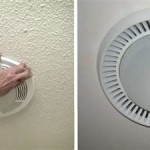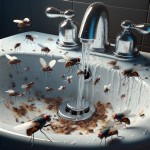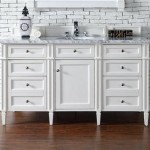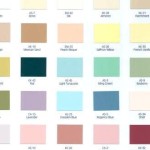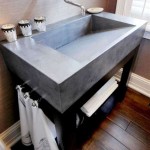Yellow Stuff Dripping From Bathroom Walls: Causes, Identification, and Remediation
The appearance of unexplained substances on bathroom walls is a cause for concern, particularly when the substance is yellow and dripping. This phenomenon can indicate a range of underlying issues, from relatively minor aesthetic problems to significant structural or plumbing concerns. Proper identification of the substance and determination of its source are crucial for effective remediation and prevention of future occurrences. This article will detail the potential causes, identification methods, and recommended remediation strategies for yellow substances dripping from bathroom walls.
Identifying the Yellow Substance
Before embarking on any remediation efforts, it is essential to characterize the yellow substance as accurately as possible. This involves meticulous observation and, if necessary, professional testing. Key aspects to note include the substance's consistency, odor, location, and prevalence.
Consistency: Is the substance viscous, oily, watery, or solidifying? Oily substances might point towards lubricant leaks or condensation mixed with oils from bathroom products. Watery substances could indicate water leaks or condensation build-up dissolving pre-existing stains or materials. Solidifying or waxy substances might suggest melting wax or the breakdown of certain building materials.
Odor: Does the substance have a distinct smell? The presence of a chemical odor might indicate a leak from cleaning products or other stored chemicals. A musty or mildewy smell is indicative of mold growth, which can sometimes present as a yellow or yellowish-brown discoloration. A sewage-like odor strongly suggests a plumbing issue.
Location: Where is the substance dripping from? Is it localized to a specific area, such as around a shower head or near a plumbing fixture? Is it appearing along a wall seam or near the ceiling? The location can provide valuable clues about the source. For example, dripping from the ceiling could suggest a leak from the floor above, while dripping near plumbing fixtures points toward potential pipe leaks.
Prevalence: How widespread is the issue? Is it a small, isolated occurrence, or is it affecting a large area of the bathroom? A widespread issue might suggest a systemic problem like high humidity and condensation, whereas a localized problem is more likely to be a specific leak or isolated source.
Professional testing by a qualified inspector or lab may be necessary to determine the precise chemical composition of the substance. This is particularly important if health concerns exist or if the source is unclear. Testing can identify the presence of mold, specific chemicals, or other contaminants.
Potential Causes of Yellow Dripping Substances
Several factors can contribute to the appearance of yellow substances dripping from bathroom walls. These causes range from relatively benign to potentially serious and require careful investigation.
Condensation and Water Staining: Bathrooms are inherently humid environments. Poor ventilation can lead to excessive condensation, which can dissolve pre-existing stains on walls and ceilings, causing them to drip. These stains are often yellow or brown, originating from water-soluble materials like nicotine, dust, or soap residue. The condensation itself is clear, but it carries these dissolved materials as it drips, resulting in a yellowish discoloration.
Plumbing Leaks: Leaks from pipes, showerheads, or faucets can lead to water damage and discoloration. Even small, slow leaks can create significant problems over time. The water itself may not be yellow, but it can dissolve minerals and rust from pipes and fixtures, resulting in a yellow or rusty-colored dripping liquid. Leaks within walls can be particularly problematic as they may go undetected for extended periods, causing significant structural damage.
Mold Growth: Mold thrives in damp, poorly ventilated environments, such as bathrooms. While mold is often associated with black or green discoloration, certain types of mold can appear yellow or yellowish-brown. The mold itself may not drip, but the moisture that supports its growth can seep through walls and ceilings, carrying with it pigments from the mold colonies. This can create a dripping yellowish substance.
Building Material Degradation: Some building materials, particularly older materials, can degrade over time and release yellow or brown substances. For example, certain types of insulation can break down and leach chemicals, which can then drip down walls. Similarly, some adhesives used in wall construction can degrade and release yellowish oils. This is more common in older homes or those with specific types of building materials.
Chemical Leaks or Spills: Improper storage or accidental spills of cleaning products, toiletries, or other chemicals can lead to staining and dripping. Some cleaning products contain chemicals that can react with wall paint or other surfaces, causing discoloration. Additionally, leaks from aerosol cans or other pressurized containers can deposit chemicals on walls, which may then drip down.
Insect Activity: In rare cases, certain insect infestations can contribute to yellow staining. For example, cluster flies or other insects can leave behind yellowish excrement, which can accumulate and drip down walls. This is more likely to occur in areas where insects are prevalent.
Remediation Strategies
The appropriate remediation strategy depends on the identified cause of the yellow dripping substance. It is crucial to address the underlying issue to prevent recurrence.
Addressing Condensation: Increasing ventilation is paramount. This can involve installing or upgrading exhaust fans, opening windows after showering, and ensuring proper airflow throughout the bathroom. Dehumidifiers can also be used to reduce humidity levels, particularly in bathrooms with poor ventilation. Cleaning walls and ceilings regularly to remove accumulated dust, soap scum, and mildew can also help prevent staining.
Repairing Plumbing Leaks: Locating and repairing any plumbing leaks is essential. This may involve hiring a qualified plumber to inspect pipes, faucets, showerheads, and other fixtures. Even small leaks should be addressed promptly to prevent further water damage and potential mold growth. After repairing the leak, it is important to dry out the affected area thoroughly to prevent future problems.
Mold Remediation: Mold remediation should be performed by qualified professionals, particularly if the mold covers a large area or if individuals in the household have sensitivities or respiratory issues. Mold remediation typically involves identifying and eliminating the source of moisture, cleaning or removing contaminated materials, and disinfecting the affected area. Proper personal protective equipment, such as masks and gloves, should be worn during mold remediation to prevent exposure to spores.
Addressing Building Material Degradation: If the yellow substance is due to degrading building materials, the affected materials may need to be replaced. This could involve replacing insulation, drywall, or other wall components. It is important to identify the specific material that is degrading and choose a replacement material that is resistant to moisture and degradation. Consultation with a building professional is recommended to ensure proper material selection and installation.
Cleaning Chemical Spills: Clean up any chemical spills immediately and thoroughly. Use appropriate cleaning agents and follow safety precautions outlined on the product label. Rinse the affected area thoroughly with clean water and dry it completely. If the chemical has caused permanent staining, the affected area may need to be repainted.
Controlling Insect Infestations: If insect activity is contributing to the problem, pest control measures may be necessary. This could involve using insecticides, traps, or other methods to control the insect population. Sealing cracks and crevices in walls and around windows and doors can also help prevent insects from entering the bathroom.
In all cases, it is advisable to consult with qualified professionals, such as plumbers, mold remediation specialists, or building inspectors, to accurately diagnose the cause of the yellow dripping substance and implement the appropriate remediation strategy. Addressing the underlying cause is crucial for preventing recurrence and maintaining a healthy and safe bathroom environment.

How To Fix Yellow Drips On Walls And Ceilings

How To Clean Yellow Drips On Bathroom Walls Diy 5 Methods

Why Do Bathroom Walls Sweat Yellow And How To Prevent It Loo Academy

Why Do My Bathroom Walls Sweat Yellow Homedcent

Why Do My Bathroom Walls Sweat Yellow Homedcent

How To Fix Yellow Drips On Walls And Ceilings

Fixing Yellow Oily Drops On Walls Doityourself Com

How To Get Water Stains Off Bathroom Walls Igloo Surfaces

Why Do My Bathroom Walls Sweat Yellow Homedcent

Sticky Humidity On Bathroom Walls Hometalk
Related Posts
